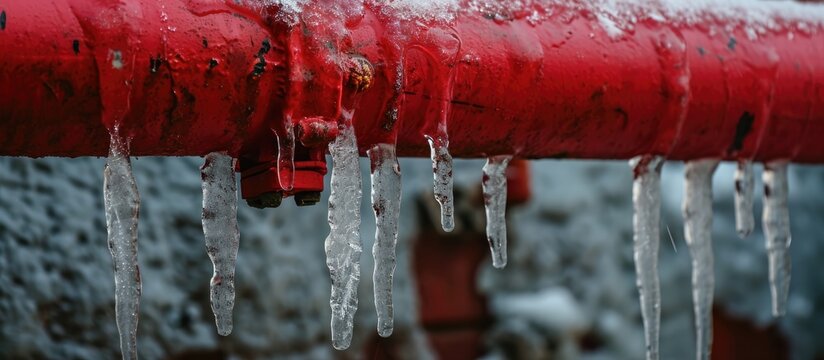Just how do you feel on the subject of How To Avoid Freezing Pipes?
:strip_icc()/snow-outdoor-faucet-pipes-4af65d1e5e904fb1aa7bf74071fe5d89.jpg)
Cold weather can damage your plumbing, particularly by freezing pipelines. Below's exactly how to prevent it from taking place and what to do if it does.
Introduction
As temperature levels decline, the risk of icy pipes boosts, potentially causing pricey fixings and water damage. Recognizing just how to avoid icy pipes is important for house owners in cold climates.
Recognizing Frozen Pipes
What triggers pipelines to ice up?
Pipelines freeze when exposed to temperatures listed below 32 ° F (0 ° C) for expanded durations. As water inside the pipes freezes, it broadens, putting pressure on the pipe walls and potentially triggering them to rupture.
Dangers and damages
Frozen pipelines can cause water disturbances, residential or commercial property damage, and pricey fixings. Ruptured pipes can flooding homes and trigger extensive architectural damages.
Indications of Frozen Pipes
Recognizing frozen pipes early can stop them from rupturing.
Exactly how to identify icy pipes
Try to find decreased water circulation from faucets, unusual odors or sounds from pipelines, and visible frost on revealed pipes.
Avoidance Tips
Shielding prone pipelines
Wrap pipes in insulation sleeves or use heat tape to secure them from freezing temperatures. Focus on pipelines in unheated or exterior locations of the home.
Heating methods
Maintain interior areas effectively warmed, especially areas with pipes. Open closet doors to allow cozy air to circulate around pipes under sinks.
Safeguarding Exterior Pipes
Yard hoses and exterior taps
Separate and drain yard tubes before winter season. Set up frost-proof faucets or cover outside faucets with protected caps.
What to Do If Your Pipes Freeze
Immediate activities to take
If you believe frozen pipelines, keep taps available to soothe pressure as the ice melts. Utilize a hairdryer or towels taken in hot water to thaw pipes slowly.
Long-Term Solutions
Architectural modifications
Consider rerouting pipelines far from outside wall surfaces or unheated locations. Add added insulation to attic rooms, cellars, and crawl spaces.
Updating insulation
Purchase high-quality insulation for pipelines, attics, and walls. Appropriate insulation helps keep regular temperatures and reduces the danger of icy pipelines.
Conclusion
Stopping icy pipes calls for proactive measures and fast responses. By comprehending the reasons, indicators, and preventive measures, homeowners can protect their pipes throughout winter.
6 Proven Ways to Prevent Frozen Pipes and Protect Your Home
Disconnect and Drain Garden Hoses
Before winter arrives, start by disconnecting your garden hoses and draining any remaining water. Close the shut-off valves that supply outdoor hose bibs and leave the outdoor faucet open to allow any residual water to drain. For extra protection, consider using faucet covers throughout the colder months. It’s also important to drain water from any sprinkler supply lines following the manufacturer’s directions.
Insulate Exposed Pipes
Insulating your pipes is an effective way to prevent freezing. Pipe insulation is readily available at home improvement stores and is relatively inexpensive. Pay close attention to pipes in unheated areas such as the attic, basement, crawl spaces, or garage. Apply foam insulation generously to create a buffer against the cold. You can also wrap your pipes in heat tape or thermostat-controlled heat cables for added warmth.
Seal Air Leaks
Inspect your home for any cracks or openings that could let in cold air. Seal any holes around the piping in interior or exterior walls, as well as the sill plates where your home rests on its foundation. Additionally, make sure to keep your garage door closed unless you’re entering or exiting. Leaving it open creates a significant air leak that can lead to frozen pipes.
Allow Warm Air Circulation
During cold snaps, it’s essential to allow warm air to circulate evenly throughout your home. Leave interior doors ajar to promote better airflow. Open kitchen and bathroom cabinets to help distribute heat consistently around the rooms. If you have small children or pets, be sure to remove any household chemicals or potentially harmful cleaners from open cabinets for safety.
Let Faucets Drip
A small trickle of water can make a big difference in preventing ice formation inside your pipes. When temperatures drop significantly, start a drip of water from all faucets served by exposed pipes. This continuous flow helps prevent the water from freezing. Additionally, running a few faucets slightly can relieve pressure inside the pipes, reducing the chances of a rupture if the water inside does freeze.
https://choateshvac.com/6-proven-ways-to-prevent-frozen-pipes-and-protect-your-home/

I recently found that content about How to prepare your home plumbing for winter weather when doing a search on the internet. Are you aware of another individual who is serious about the subject? Feel free to share it. Kudos for being here. Come back soon.
Schedule A Service Call
Comments on “Protecting Against Frozen Plumbing in Winter: Professional Advice”